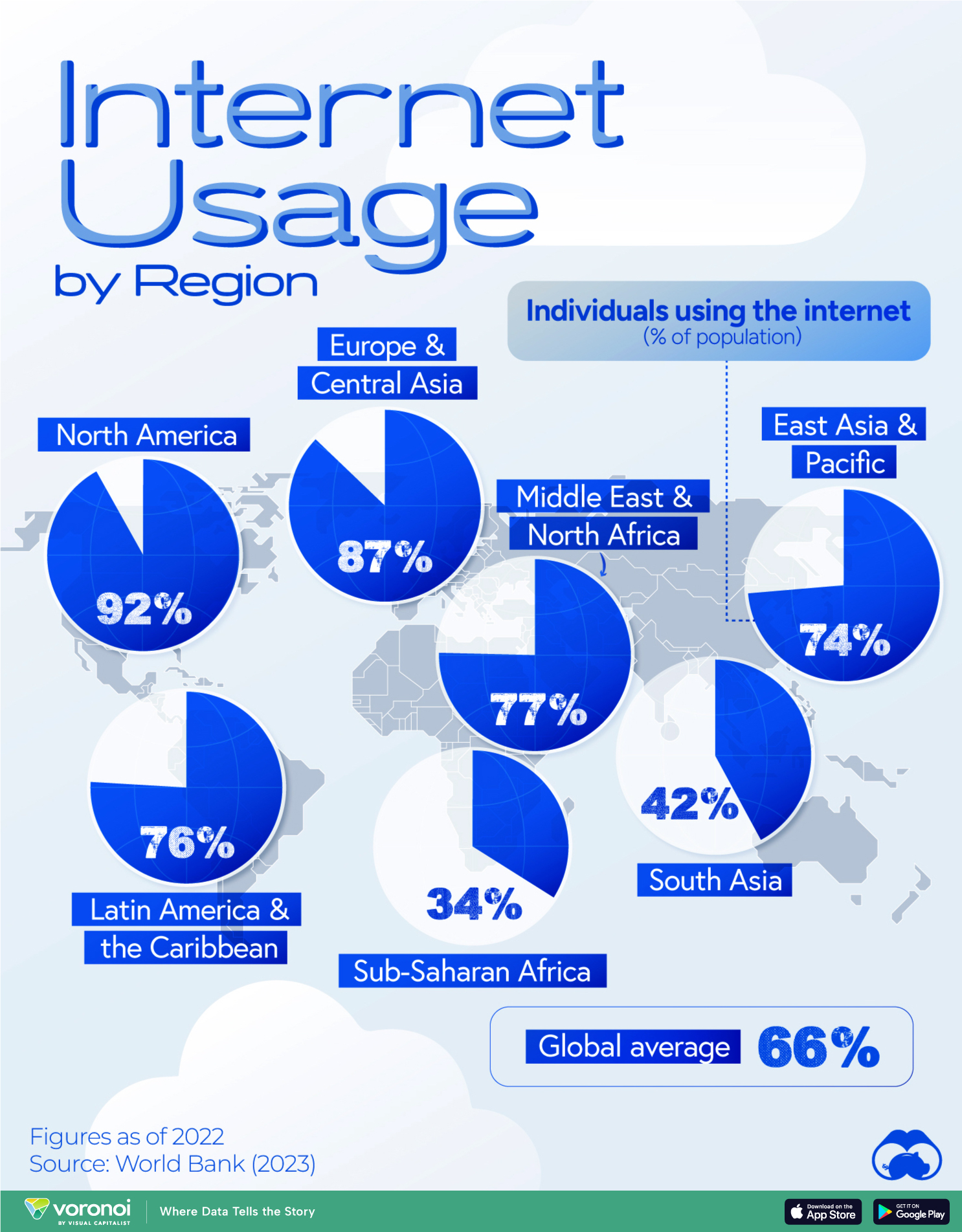In our rapidly evolving world, digital technologies are the backbone of innovation and progress, altering the face of communication, commerce, healthcare, and education. However, while we celebrate these advancements, it’s essential to recognize that billions across the globe are stranded on the wrong side of the digital divide. Dawgen Global’s analysis, underpinned by data from the World Bank’s Digital Progress and Trends Report 2023, exposes the stark disparities in internet usage and highlights the urgent need for inclusive digitalization.
The Current State of Internet Usage

Our visual narrative begins with the above infographic, which paints a telling picture of our connected world. While North America boasts a high internet usage rate at 92%, and Europe & Central Asia follow closely at 87%, these numbers are not reflective of global connectivity. A deeper dive into the data reveals a global average of 66%, with Latin America & the Caribbean at 76%, the Middle East & North Africa at 77%, and East Asia & Pacific at 74%. However, South Asia and Sub-Saharan Africa trail with 42% and 34% respectively, exposing a digital chasm that demands attention.
Historical Context and Recent Growth
From 2018 to 2022, the planet welcomed an impressive 1.5 billion new netizens. The year 2020 marked a historic surge, witnessing a 6% increase—equivalent to 500 million people—connecting online, the steepest rise recorded to date. India’s digital leap is particularly noteworthy, jumping from a mere 20% internet penetration in 2018 to over 50% by 2022, embodying the potential for rapid digital transformation.
Digitalization’s Uneven Progress
The data is unequivocal: internet access is a lever of socio-economic upliftment. However, as the digital landscape expands, so does the divide, leaving many in the shadows. It’s a call to action for policymakers, businesses, and civil society to forge pathways that bridge this gap, ensuring that the benefits of digitalization are universally accessible, promoting growth and development that is truly inclusive.
Dawgen Global invites you to reflect on the digital divide’s implications and to actively participate in closing this gap. Whether through policy advocacy, investment in infrastructure, or community-led digital literacy programs, each effort counts towards building a more connected and inclusive future.
Next Step!
“Embrace BIG FIRM capabilities without the big firm price at Dawgen Global, your committed partner in carving a pathway to continual progress in the vibrant Caribbean region. Our integrated, multidisciplinary approach is finely tuned to address the unique intricacies and lucrative prospects that the region has to offer. Offering a rich array of services, including audit, accounting, tax, IT, HR, risk management, and more, we facilitate smarter and more effective decisions that set the stage for unprecedented triumphs. Let’s collaborate and craft a future where every decision is a steppingstone to greater success. Reach out to explore a partnership that promises not just growth but a future beaming with opportunities and achievements.
✉️ Email: [email protected] 🌐 Visit: Dawgen Global Website
📞 Caribbean Office: +1876-6655926 / 876-9293670 📲 WhatsApp Global: +1 876 5544445
Join hands with DawgenGlobal. Together, let’s venture into a future brimming with opportunities and achievements.

